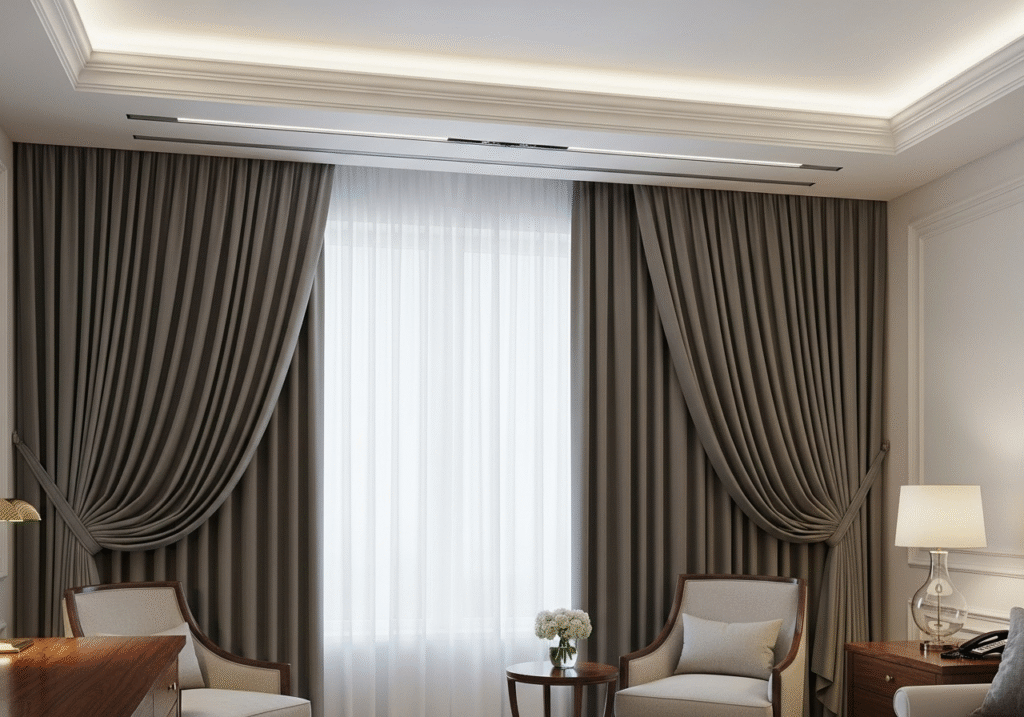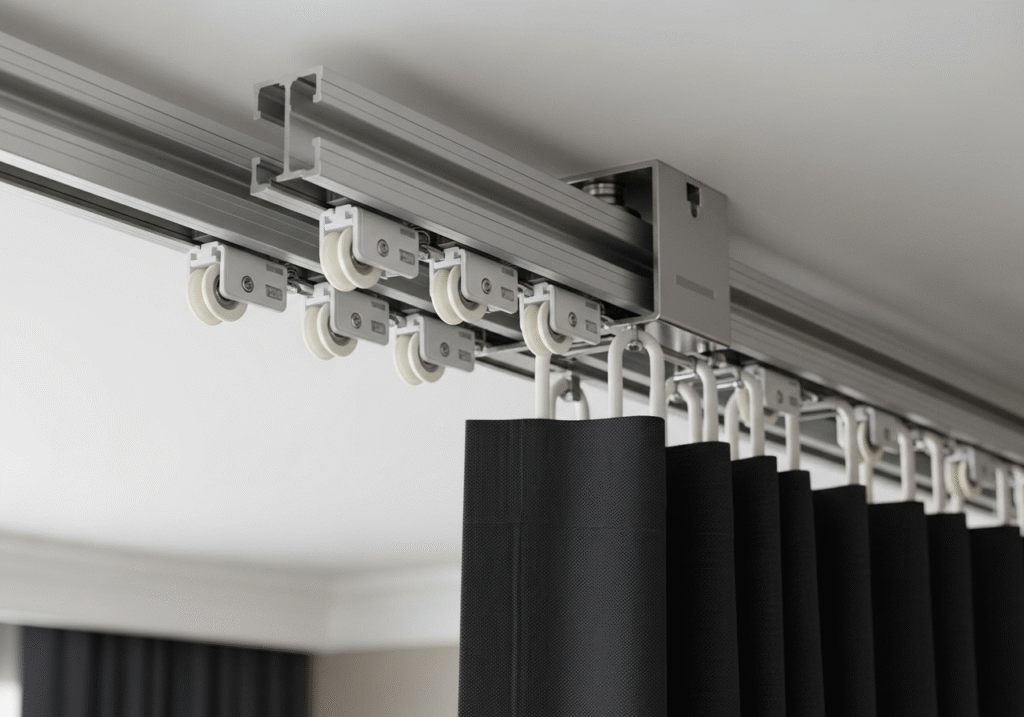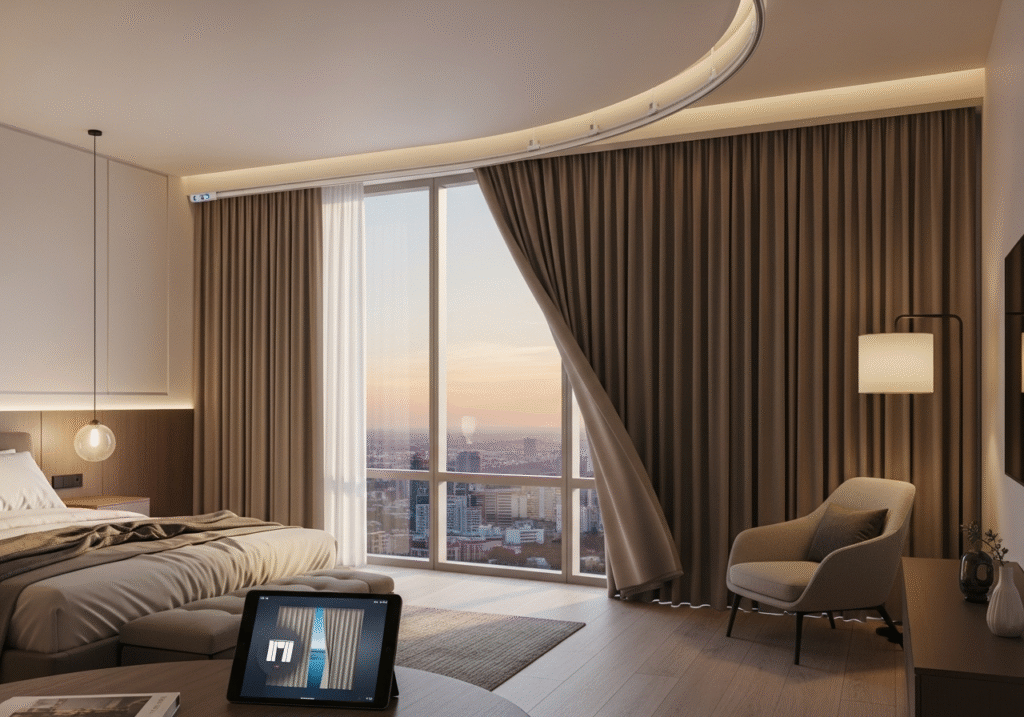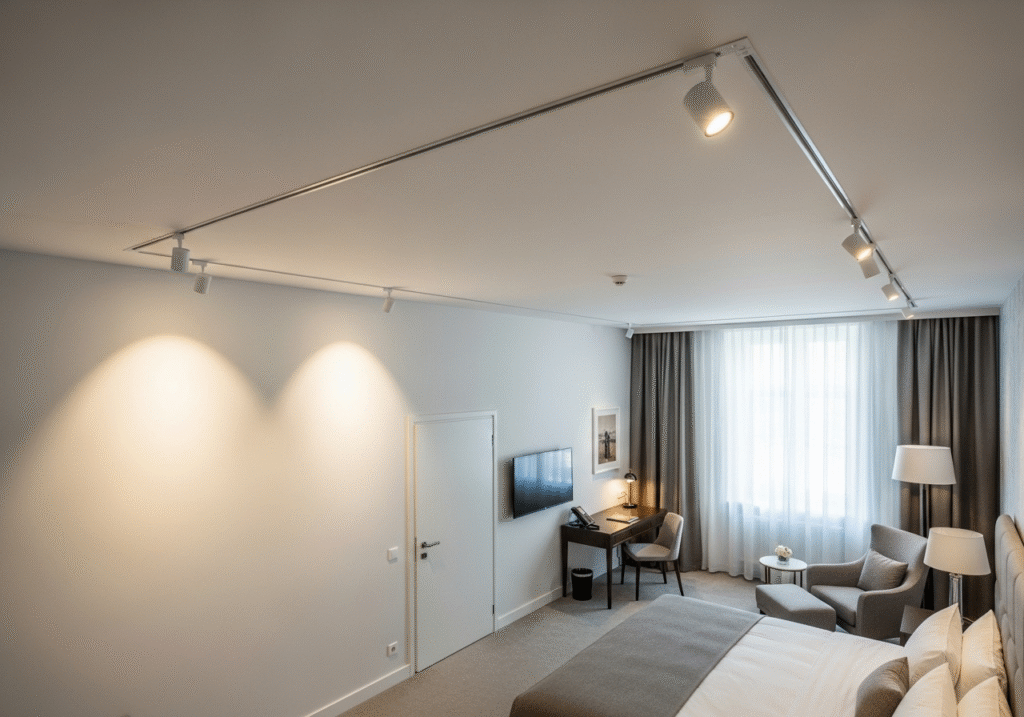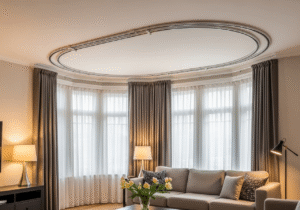A clunky, noisy curtain can instantly ruin the feeling of luxury in a hotel room. This small detail can cheapen the guest experience and lead to negative reviews. The best hotels use specific, advanced solutions.
Luxury hotels successfully implement curtain tracks by integrating recessed, motorized, and dual-track systems. This approach achieves a flawless high-end aesthetic, provides effortless control for guests, and ensures complete light blockage, reinforcing the hotel's commitment to comfort and detail.
I remember visiting a five-star hotel for a trade show years ago. The first thing I noticed in my room wasn't the view; it was the curtains. They were silent, moved perfectly, and disappeared into the ceiling. It was clear the hardware was chosen as thoughtfully as the furniture. For a purchasing manager like Matt, this is the goal: sourcing components that are not just functional but that actively contribute to the brand's promise of luxury. It’s about understanding that in a high-end environment, every single detail matters, especially the ones guests don't see.
What type of curtain tracks do hotels use?
Choosing the wrong track for a hotel leads to constant maintenance and noise complaints. This wears out expensive curtains and, more importantly, annoys guests, disrupting their stay.
Hotels almost exclusively use heavy-duty, commercial-grade I-beam or box tracks. These are typically made of extruded aluminum and feature high-performance gliders to ensure silent operation and durability for heavy, layered drapery.
From my days on the factory floor, I learned that not all tracks are created equal. The tracks used in hotels have to be workhorses, designed to withstand use and abuse from thousands of guests over many years. A residential-grade track would fail in months. That is why hotels invest in commercial systems. These tracks are built from thick, extruded aluminum, which prevents bending or warping under the weight of heavy, flame-retardant blackout fabrics.
The gliders are just as important. In a hotel, silence is golden. A squeaky or grinding track can lead to a sleepless night and a complaint at the front desk. That’s why hotel tracks often use ball-bearing gliders or specialized wheeled carriers that glide effortlessly and silently. The system must also support layering, which is standard in luxury rooms.
| Track Style | Common Use Case | Key Benefit for Hotels |
|---|---|---|
| Double I-Beam Track | Layering sheers and blackouts | Allows independent control for light filtering and total darkness. |
| Recessed Track | Integrated into ceiling | Creates a clean, minimalist aesthetic where curtains appear to float. |
| Motorized Track1 | High-end suites, smart rooms2 | Provides ultimate guest convenience and a "wow" factor. |
How Have Curtain Track Innovations Improved Guest Experience in Luxury Hotels?
A standard curtain is just a manual piece of fabric that blocks light. It functions, but it does little to create a memorable or luxurious experience for the guest.
Innovations like one-touch motorization, whisper-quiet gliders, and curved tracks have transformed curtains into an amenity. They offer effortless control, ensure a peaceful environment, and adapt to stunning architectural designs, directly enhancing guest comfort and enjoyment.
The best hotels understand that luxury is often about effortless convenience. Curtain track innovations are now a key part of creating that feeling. As a manufacturer, it’s exciting to see our products move beyond simple function to become part of the guest experience itself. The goal is to make the guest feel pampered and in complete control of their environment.
Effortless Motorization
The biggest innovation is motorization. Allowing a guest to open and close heavy blackout drapes with the touch of a button from their bed is a powerful statement. It says "relax, we'll take care of it." These systems are now integrated into the room's central control panel or even voice-activated, adding a high-tech touch that modern luxury travelers expect. It's a simple feature that leaves a lasting impression of quality and care.
The Sound of Silence
Another key area of innovation is in the gliders and track mechanics. We have poured a lot of engineering into creating systems that are virtually silent. Using ball-bearing carriers and specially coated track interiors minimizes friction. This ensures that a guest wanting to sleep in is not disturbed by their partner opening the curtains. It is a subtle detail, but it’s fundamental to creating a restful sanctuary.
Design Flexibility with Curved Tracks
Finally, innovations in track bending have allowed architects to be more creative. Hotels are no longer limited to straight windows. Custom-curved tracks can follow the lines of a beautiful bay window or create soft, flowing room dividers in a suite. This allows the window treatment to become a seamless part of the architecture, rather than an afterthought.
How Have Luxury Hotels Implemented and Installed Recessed Curtain Track Solutions Successfully?
Visible curtain hardware can look cluttered and disrupt the clean, minimalist lines that define modern luxury design. It can feel like an oversight in an otherwise perfect room.
Hotels successfully install recessed tracks by planning during the initial construction or renovation phase. They create a dedicated channel in the ceiling structure, allowing the track to be mounted flush and completely hidden from view.
The "floating curtain" look is the gold standard in luxury hotel design, and it's achieved with a recessed track. I've worked on many projects with designers where this was a non-negotiable detail. Making it successful requires foresight and planning; it cannot be an afterthought. The key is integrating the track pocket into the ceiling design from day one.
The Construction Process
During construction, a special channel or "pocket" is framed out in the ceiling where the curtains will hang. This pocket must be wide enough to accommodate a double track system3 (for sheers and blackouts) and deep enough to hide the track and the curtain headers completely. The dimensions are critical. The track is then mounted directly onto solid blocking inside this pocket before the final ceiling finish is applied. The result is a clean slit in the ceiling4 from which the curtains emerge, creating a dramatic, floor-to-ceiling effect with no visible hardware.
Overcoming Challenges
The main challenge is coordination. The architect, interior designer, contractor, and curtain supplier must all work together. A purchasing manager like Matt plays a vital role in ensuring the specified track fits the designed pocket perfectly. Retrofitting a recessed track into an existing ceiling is possible but much more complex and expensive. It involves cutting into the ceiling, adding new structural support, and extensive plaster and paintwork. This is why planning ahead is the only truly successful route to achieving this seamless, high-end installation.
Conclusion
Luxury hotels use advanced, integrated curtain tracks as a key tool. By focusing on recessed, motorized, and silent systems, they enhance aesthetics, comfort, and the overall guest experience.
Related:
-
Explore how Motorized Tracks enhance guest experience and convenience in high-end suites. ↩
-
Discover the latest innovations in smart room technology that elevate comfort and convenience for guests. ↩
-
Understanding the double track system can enhance your curtain installation, ensuring both sheers and blackouts function seamlessly. ↩
-
Exploring this topic will provide insights on achieving a professional finish for your curtain installation. ↩
